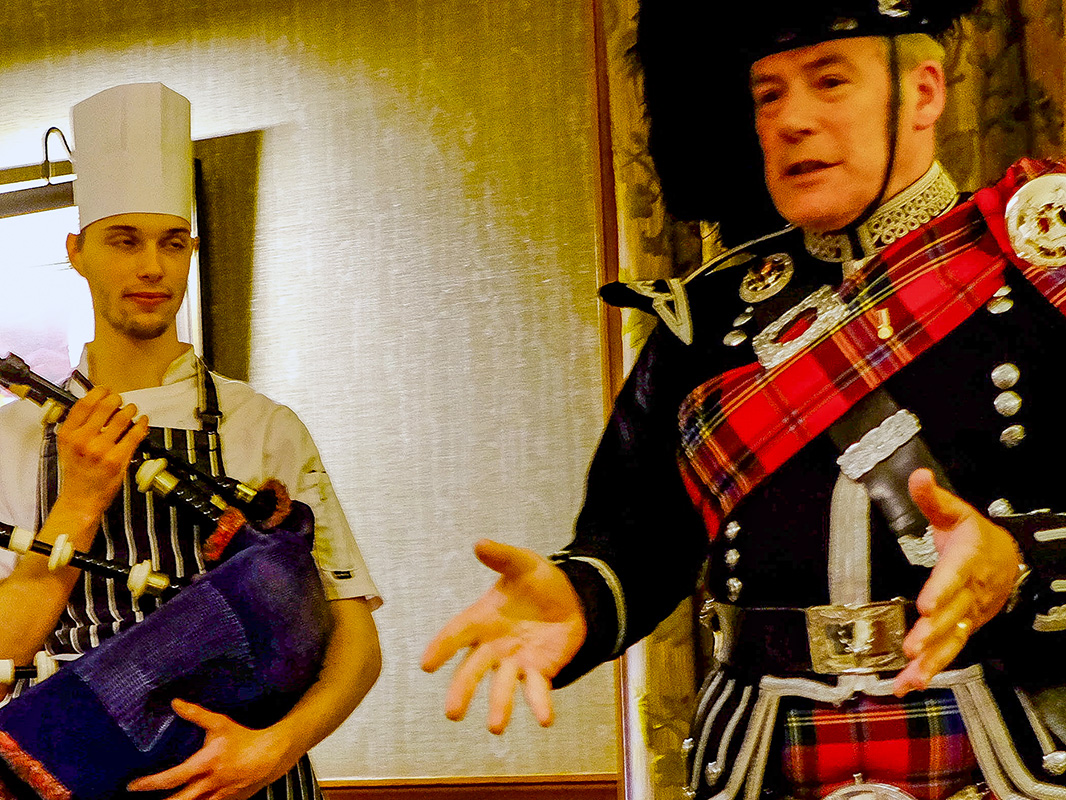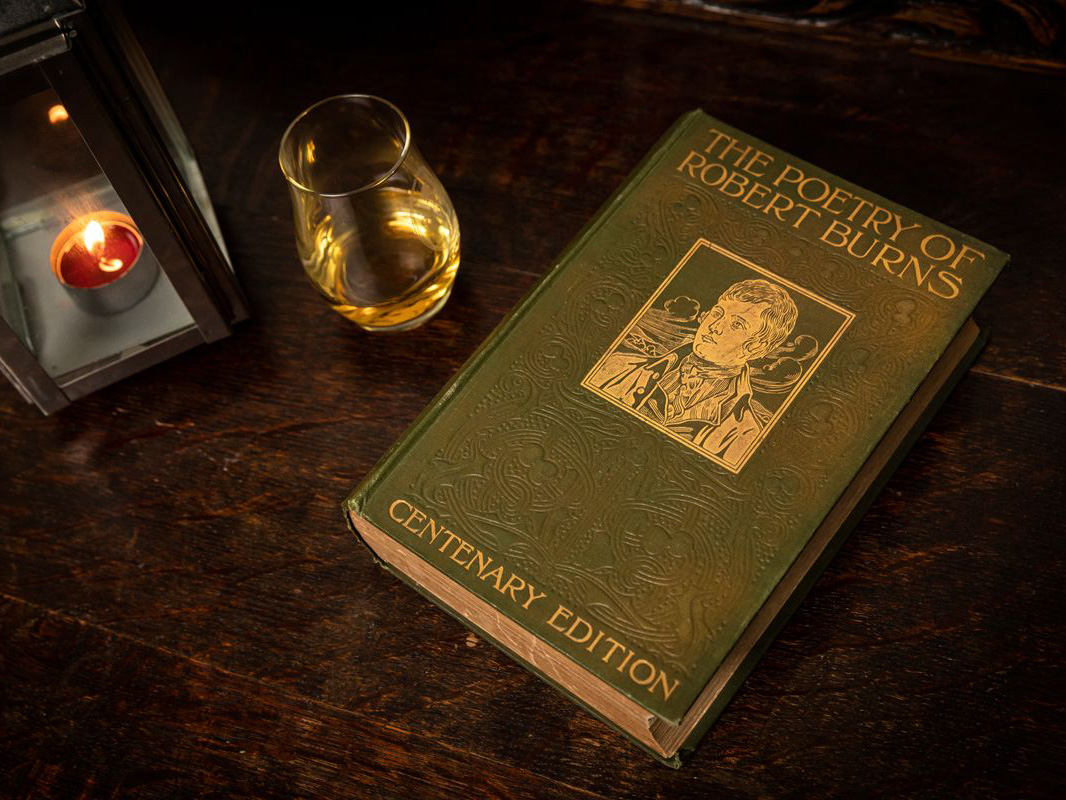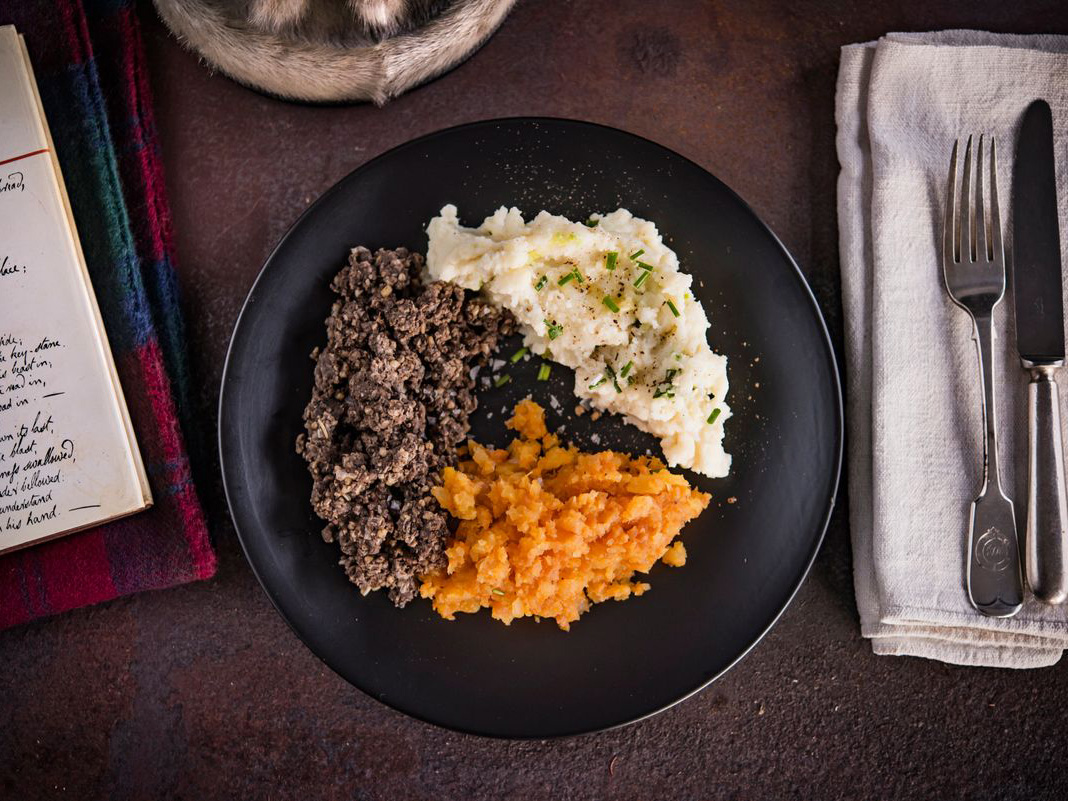Held in honour of Scotland’s most famous poet, Burns Night is one of our most fun traditions – and more widely celebrated than St Andrew’s Day. Fancy celebrating Robert Burns? Here is my complete guide to Burns Night – find out all about:
- What is a Burns Night or Burns Supper?
- When is Burns Nights?
- Who was Robert Burns?
- How did the tradition of Burn’s Night start?
- How do you celebrate Burns Night?
- Burns Night traditions and poems, and,
- What to wear to a Burns Night.

What is Burns Night and a Burns Supper?
Burns Night or a Burns Supper is a Scottish tradition of celebrating the birthday of the poet Robert Burns.
A Burns Supper is a dinner or ‘supper’ complete with a special Scottish menu and recitals of some of Burn’s most famous poems and lyrics.
When is Burns Night and what date is Burns Night?
Burns Night is marked with Burns Suppers on or around the 25th January each year.
Who was Robert Burns?
Robert Burns was born in the village of Alloway, Ayrshire on the 25th January 1759. One of Scotland’s most famous cultural icons, Robert (or Rabbie) Burns was a poet whose poems written in the Scots language are famous worldwide.
Still not sure who Rabbie Burns is? Well he wrote Auld Lang Syne which is sung at Hogmanay and other new year celebrations worldwide:
“Should auld acquaintance be forgot, and never brought to mind? Should auld acquaintance be forgot, and auld lang syne!”
Rabbie Burns started life a farm labourer on his father’s farm, receiving little schooling and little sign of the poetry to come – until he met Nelly Kilpatrick his first love who inspired him to write the poem “O, Once I Lov’d A Bonnie Lass”.
“O Once I lov’d a bonnie lass, An’ aye I love her still, An’ whilst that virtue warms my breast, I’ll love my handsome Nell“
Farming was never profitable to Burns and his family and at the age of 30, Robert took at job at a sugar plantation in Jamaica. To to pay for his crossing, he was persuaded to publish a collection of his works and ‘Poems, Chiefly in the Scottish dialect‘ (affiliate link) otherwise known as the Kilmarnock volume.
The collection was published on the 31 July 1786 and contained one of my favourite poems “To a Mouse” – wee, sleeket, cowran, tim’rous beastie, o, what a panic’s in thy breastie!”
The collection was a sell out success and Rabbie never made the crossing to Jamaica.
Over the next 7 years, Burns wrote hundred of poems, lyrics and folk songs (affiliate link) including “Ae Fond Kiss”, “Tam O’ Shanter” becoming a celebrated poet. Having moved to Dumfries where he was working as an excise man whilst still composing, Robert Burns’s health declined sharply and he died at the age of 37 on the 21 July 1796.

How did the tradition of Burn’s Night start?
A memorial meal to Robert Burns by nine of his friends was held on the firth anniversary of Burn’s death, at Burn’s cottage in Alloway, Ayrshire.
However, the the first Burn’s Supper is widely belived to have been held by the first ever Burns Society in Greenock on the 29th January 1802. The following year it was discovered that Burns had actually been born on the 25th January, and the date has been set ever since.
How do you celebrate Burns Night?
Burns Night is celebrated with Burns Suppers around Burn’s Birthday on the 25th January.
Firstly, what do you wear to a Burns Night?
Tartan of course!
For men, a Burns Supper is a chance to dig out the full kilt regalia, or a part of tartan trousers – or even just a tartan tie or bow tie.
For women, dig out a tartan dress or formal wear and add a tartan scarf, brooch or sash.
Want to find your tartan? Even if you don’t have a Scottish family name such as Campbell, Mackenzie or Stuart, you may still be connected to a clan. Many clans have accepted alternative surnames – for example, the Drummond clan was started by a Begg!
To find out if you have a clan, visit Scottish surname search tool over on the Council of Scottish Clans & Associations.

What happens at a Burns Supper?
Whilst every Burns Supper is different – Burns Night can be formal or informal and can range from a simple supper or meal to a full recital of Burns poetry and tributes, to live music, bagpipes and a ceilidh – there is a standard running order to the evening.
Arrival at a Burns Supper and the Selkirk Grace
Burns Supper guests arrive for the evening and are welcomed for the evening often by piped in by bagpipes.
Once all guests are seated for dinner, the host will say a few words about the gathering and then say the Selkirk Grace:
“Some hae meat an canna eat, and some wad eat that want it; but we hae meat, and we can eat, and sae the Lord be thankit”
The grace means ‘some have meat but cannot eat, some have none that want it; but we have meat and we can eat, so let the Lord be thanked”.
Whilst it is popular verse at Burns Nights, the Selkirk Grace was not written by Burns. Instead the prayer was originally called instead Covenanters’ Grace” or “Galloway Grace” and got its name from a recital of the prayer by Burns at a party held by the Earl of Selkirk in 1794 – something he would do many times.
Another popular Burns Night welcome toast is address:
Call – Here’s ta us, wha’s like us?
Response – Damn few and they’re deid!
Or here’s to us, who is like us, damn few and they’re dead!
Or the classic “Slàinte Mhath” which is pronounced “slan-cha va” and means to you good health. If you want to reply you can say “Slainte Mhor” which means more health to you.
The Burns Night Supper and Address to a Haggis
Once grace has been said, the meal starts. A Burns Night Supper consists of a traditional Scottish starter (often soup such as cock-a-leekie, cullen skink or lentil) a main of haggis, neeps (turnip) and tatties (potatoes) and a Scottish dessert such as Cranachan (oats, strawberries and cream)
Once the starter has been served and eaten, the gathering will all stand for the arrival of the haggis. The haggis is usually accompanied by bagpipes and is quite the occasion!
The host will recite the ‘address to a haggis‘ a poem written by Robert Burns in 1786 with a dramatic carving of the haggis at a point in the poem.
“Fair fa’ your honest, sonsie face, Great chieftain o the puddin’-race!”
At the line of the poem His knife see rustic Labour dicht, the host will draw and sharpens a knife and then at the line An’ cut you up wi’ ready slicht, the host will stab the haggis and cut it open from end to end – often to plenty of cheers. At the end of the poem, everyone will then toast the haggis and the meal is then served.
What is haggis?
Haggis is minced lamb offal mixed with suet, oatmeal or barley, spices and onion, cooked in a sheep’s stomach – although today this is often sausage casing or event just plastic covering.
Vegetarian haggis is also available and is just as tasty and contains a mix of veg, lentils or oats, suet and spices such as ground coriander, mixed spice, nutmeg, pepper, and shallots.
Burns Night Traditions and activities
After the meal, the real fun begins with tributes to Burns and recitals of his poetry. whisky or other drinks will arrive to guests and the toasts will traditionally run in the following order:
Immortal memory – the most formal part of a Burns Supper is the Immortal memory – a speech written by the speaker about Burns, focusing on his life and works, ending with a toast to his memory.
Address to the Lassies – once a toast to the women who would have prepared the meal, the address to the lassies is now a humorous and warm speech written and performed by a man about the ‘lassies’ and a toast to women’s health.
Reply to the Laddies – spoken by a woman, the reply to the laddies is a retort to the address to the lassies. Quite often the speakers will write their toasts together – the toasts are designed to be funny but not offensive, but banter is encouraged!
Other poetry – following the toasts there may be recitals of poems or music by Burns.
A toast of thanks – at the end of the toasts, the host will usually give a toast of thanks for all who have attended. At this point, the gathering may sing Auld Land Syne.
At formal events, the Burns Supper is often followed by a ceilidh and lots of raucous dancing – making the Burns Supper one of the best events on the Scottish calendar!
Slàinte Mhath!
Love from Scotland x
